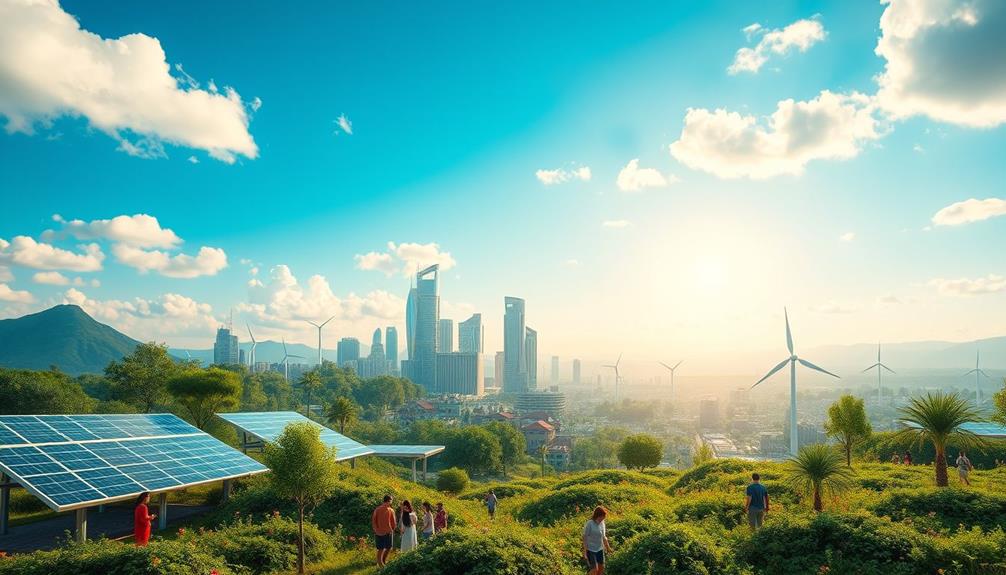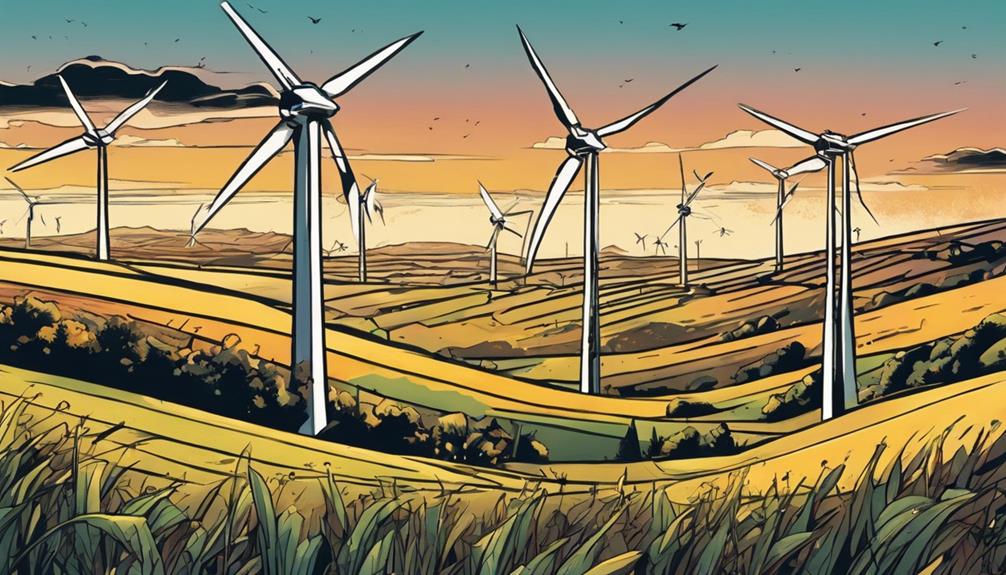Vaclav Smil's predictions emphasize that while we're enthusiastic for a renewable future, our reliance on fossil fuels complicates this change. Despite advancements in renewable technologies and decreasing costs, fossil fuels still account for about 85% of global energy consumption. Shifting requires significant investment in infrastructure and overcoming various economic challenges. Innovations like solar energy and improved battery technologies are promising, but the path forward is not straightforward. To truly understand the hurdles and potential solutions in this energy transformation, you'll want to explore the deeper implications of Smil's insights. One potential solution that has gained traction is the widespread adoption of solar energy, such as the innovative Solark 15k system. This technology has the potential to revolutionize the way we generate and consume energy, but it also requires significant investment and infrastructure changes. By further exploring the implications of Smil’s predictions, we can gain a clearer understanding of the challenges and opportunities in transitioning towards a more sustainable energy future.
Key Takeaways
- Vaclav Smil emphasizes the slow nature of energy transitions, highlighting that society often underestimates the time and investment required for renewables.
- Historical reliance on fossil fuels complicates the shift to renewables, as they currently account for about 85% of global energy consumption.
- Infrastructure development is critical for renewable energy adoption, yet many regions lack the necessary grids and networks to support this transition.
- Economic viability of renewables is contentious, with ongoing debates about cost-effectiveness and the efficiency of technologies like solar and wind energy.
- Achieving decarbonization by 2050 will require significant technological advancements and collective action from affluent nations to support sustainable energy practices.
Historical Overview of Energy Use
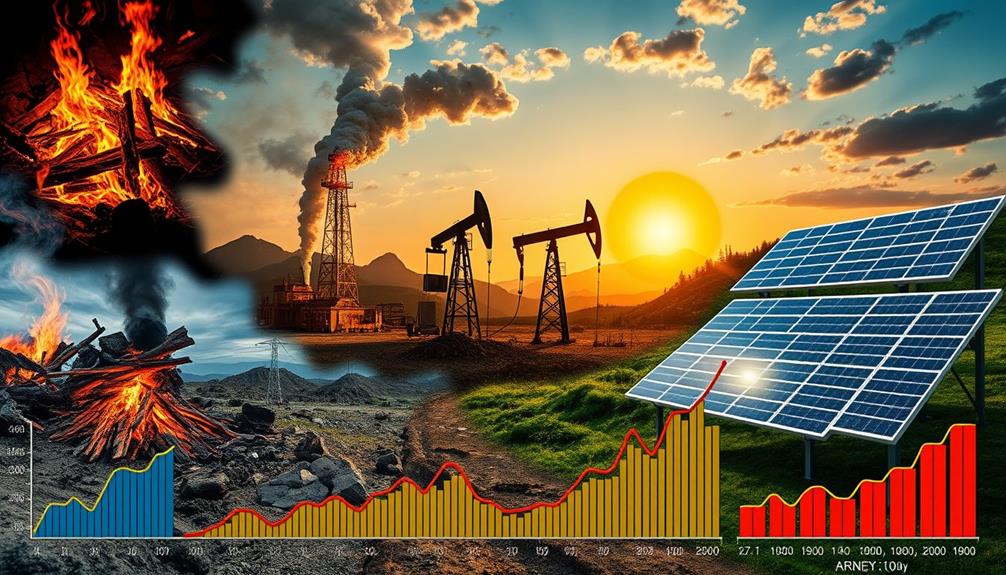
Energy consumption has evolved dramatically over the decades, shaping our environment and society. From 1989 to 2019, global anthropogenic greenhouse gas emissions skyrocketed by 67%, a clear indicator of our increasing energy use and its impact on climate change.
While many affluent countries have shifted from coal to natural gas, fossil fuels still dominate our energy landscape, accounting for about 85% of global energy use. This reliance on fossil fuels complicates efforts to combat climate change. Furthermore, the integration of renewable sources, such as wind and solar energy, is becoming increasingly important to mitigate these issues and support sustainable development electricity production from wind turbines. However, despite the advancements in renewable technologies, the transition to a cleaner energy system is slower than anticipated in many regions. Initiatives like **lm wind power grand forks** are playing a crucial role in accelerating the adoption of wind energy by producing innovative turbine blades that enhance efficiency and reduce costs. Expanding such initiatives globally will be essential to reducing our dependence on fossil fuels and achieving long-term climate goals.
Consider the surge in car ownership in countries like China, which has more than doubled in the past few decades. This boom in personal mobility reflects a significant rise in energy demand, further straining our resources and the environment.
With the average global life expectancy at 72 years, younger generations often prioritize immediate gains over long-term climate benefits, complicating sustainable energy consumption patterns.
The shift in the IPCC's stance from accepting a 2°C increase in global temperatures to focusing on limiting it to 1.5°C underscores the urgent need for substantial changes in energy use and policy. It's clear that understanding this historical context is vital for steering our energy future.
Critique of Renewable Energy Solutions
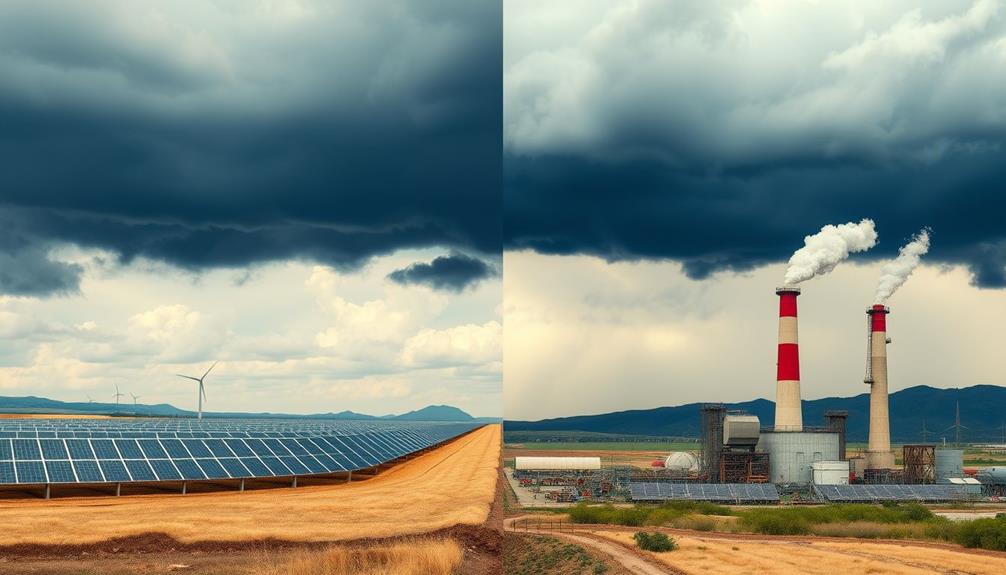
You might find that the economic viability of renewable energy solutions raises some serious questions.
For instance, while corn ethanol is often touted as a sustainable option, it's actually more useful for food production.
Additionally, a thorough understanding of keyword optimization can help identify more effective renewable energy strategies.
Plus, the lack of a strong transmission network for wind energy limits its potential and raises concerns about infrastructure readiness.
Economic Viability Concerns
Critics like Vaclav Smil raise valid concerns about the economic viability of various renewable energy solutions. For instance, he critiques corn ethanol, arguing that its efficiency and environmental impact make it a better food source than fuel. This highlights a vital point: not all clean energy options are economically beneficial.
Additionally, understanding the importance of budgeting for infrastructure investments is essential for a sustainable shift to renewable energy.
When it comes to wind energy, Smil emphasizes the need for a robust transmission network. Setting up such infrastructure can be a significant economic and logistical burden, often making large-scale deployment impractical.
Similarly, he views solar energy with skepticism, suggesting its effectiveness is frequently overstated and requires careful cost-benefit analysis.
Smil also believes electric vehicles (EVs) will struggle to dominate new car sales by 2050, mainly due to material availability issues for lithium-ion batteries. This raises questions about the future of clean energy adoption when the necessary resources are limited.
Despite recognizing the potential of renewable solutions, Smil warns that moving away from fossil fuels demands considerable time, financing, and infrastructure development.
Hence, the immediate large-scale adoption of these technologies remains a formidable challenge.
Infrastructure and Transmission Needs
The economic concerns surrounding renewable energy solutions extend beyond just financial feasibility; they also highlight the pressing need for improved infrastructure and transmission networks. Vaclav Smil emphasizes that without a robust transmission system, effectively distributing energy from sources like wind and solar becomes a challenging task.
Many regions currently lack the necessary infrastructure to support this shift, which is vital for maximizing the potential of alternatives like best HEPA filter vacuums that help maintain healthier indoor environments.
You should also consider the intermittent nature of these renewable energy sources. This unpredictability requires significant upgrades to existing grid infrastructure to maintain a reliable energy supply. Presently, the energy grid remains heavily reliant on fossil fuels, complicating the move to renewables and demanding substantial investments in new technology.
Additionally, renewable energy solutions often require extensive land use, which raises concerns about how they'll integrate into existing landscapes and communities. Simply increasing the number of renewable installations won't suffice; addressing transmission and infrastructure challenges is essential.
Otherwise, inefficiencies may arise, leading to wasted energy and missed opportunities. A thorough energy shift strategy is fundamental to guarantee that our infrastructure can support a reliable and sustainable renewable energy future.
The Role of Fossil Fuels
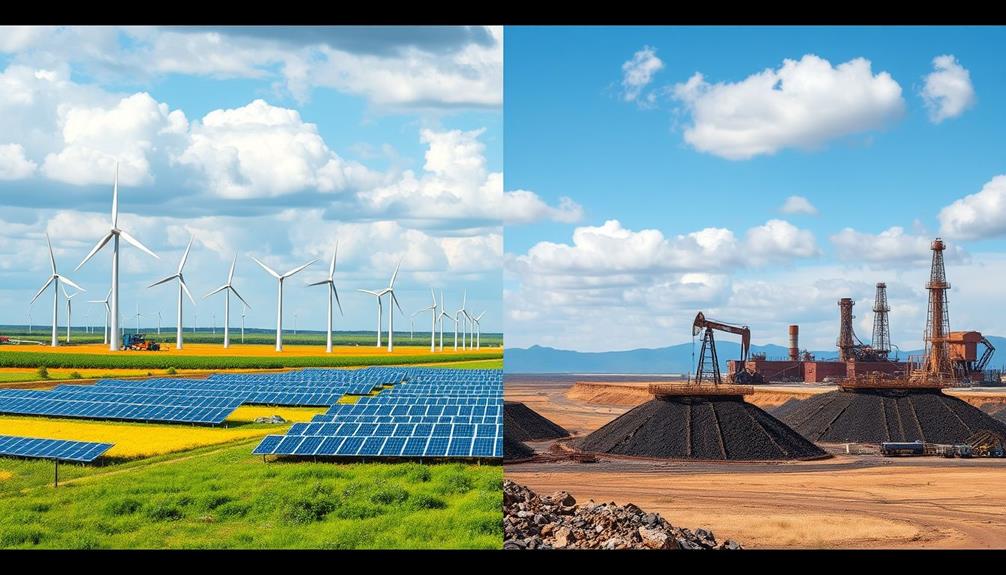
You can't ignore the fact that fossil fuels still dominate global energy use, making up about 85% of consumption.
Despite the growing interest in renewable energy sources, many investors are still turning towards traditional assets like precious metals to hedge against market volatility, as seen in trusted investment options.
Shifting to renewable energy isn't a simple task; it involves hefty costs and significant infrastructure changes.
Understanding this long-term dependence on fossil fuels is essential as we explore the future of energy.
Continued Dominance of Fossil Fuels
Despite the growing interest in renewable energy, fossil fuels still play a dominant role in the global energy landscape. They account for about 85% of the world's energy supply, highlighting the challenges in shifting to cleaner alternatives. The historical reliance on fossil fuels has shaped energy consumption patterns, making it difficult to simply replace these sources with renewables.
As we consider the implications of this dependency, it's worth noting that the shift to cleaner energy sources is often supported by natural remedies alongside conventional medications, which reflects the necessity for a balanced approach in all areas of health and sustainability.
As you consider the implications of this dependency, it's important to acknowledge that fossil fuels are a primary contributor to global temperature rise. Since 1989, global anthropogenic greenhouse gas emissions have surged by 67%, largely due to fossil fuel combustion for electricity generation and transportation.
For instance, the average SUV emits 25% more CO2 than standard cars, and the rise in SUV ownership during the 2010s has exacerbated fossil fuel consumption.
Changing from fossil fuels to renewable energy isn't just a matter of preference; it requires substantial time, financial investment, and infrastructure development. Understanding this context is essential as we navigate the complexities of energy use and the pressing need for emission reductions.
The path forward demands a strategic approach to manage this ongoing reliance on fossil fuels.
Transition Challenges and Costs
While shifting away from fossil fuels may seem like a straightforward goal, the reality is that it involves significant challenges and costs that are often underestimated. Moving to renewable energy isn't just about swapping one energy source for another; it requires extensive infrastructure development and substantial financing.
Current reliance on fossil fuels supports modern civilization's advancements and quality of life, making this shift complex. As we evaluate potential solutions, it's essential to reflect on the risks and rewards of Bitcoin IRAs as a means of diversifying investments that could fund renewable energy projects.
Despite a slight reduction in fossil fuel dependence, from 87% to 85%, major reductions in carbon emissions are still achievable, but not without facing numerous change challenges. Efficiency and design improvements can help, yet the speed and feasibility of adopting alternatives like wind and solar energy remain uncertain.
Displacing coal with natural gas may lower carbon intensity, but achieving significant emissions reductions demands overcoming economic and technological barriers.
In regions like sub-Saharan Africa, where 3.1 billion people still lack reliable energy access, the need for dependable energy solutions during this shift to sustainable sources is particularly urgent.
Balancing immediate energy needs with long-term sustainability goals is critical for a successful change, highlighting the complexities involved.
Long-term Energy Dependence
How can we envision a future without the extensive reliance on fossil fuels that has shaped our energy landscape for generations? Currently, fossil fuels account for a staggering 85% of global energy consumption, a slight decrease but still a dominant force. Vaclav Smil highlights the complexity of shifting to renewable energy, emphasizing that this change can't happen overnight.
Additionally, the need for effective investment strategies in precious metals may offer insights into the broader economic shifts necessary for this alteration.
To truly address the climate crisis, we must consider several vital factors:
- The historical dependency on fossil fuels complicates rapid change.
- Significant investment and infrastructure development are required for renewable energy.
- Achieving decarbonization by 2050 may demand substantial economic shifts.
- Technological innovations are essential to replace fossil fuels effectively.
As you think about the future, it's clear that while the growth of renewable energy is promising, our long-term dependence on fossil fuels presents challenges.
Moving away from this reliance won't be simple; it requires time, commitment, and strategic planning. The path forward lies in balancing the immediate energy needs with innovative solutions that will lead us toward a cleaner, sustainable energy future.
Challenges in Energy Transition
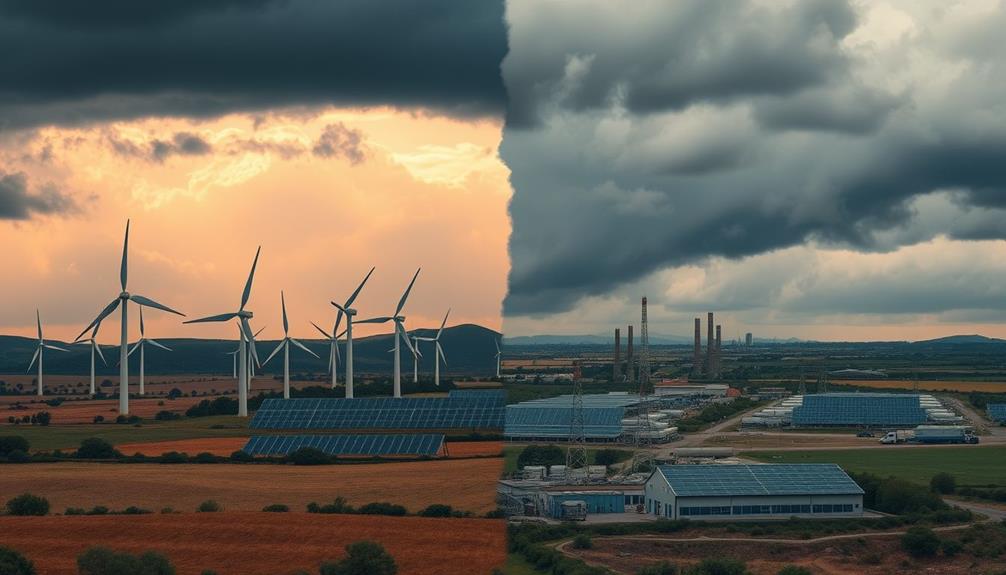
As we move towards a future reliant on renewable energy, the challenges in this alteration become increasingly apparent. Shifting from fossil fuels to renewables isn't just a change; it's a complex and costly endeavor. Achieving complete decarbonization by 2050 demands either substantial economic retreat or rapid technological breakthroughs. The integration of advanced technologies, such as energy-saving features, can play a vital role in this shift.
In sub-Saharan Africa, energy supply levels mirror those of 1860 Germany and France, highlighting the difficulty of providing modern energy access while also addressing climate concerns. While affluent nations can markedly reduce energy consumption without sacrificing quality of life, many still exhibit high per capita energy use and slow progress toward sustainability.
We face uncertainty regarding our collective resolve to implement necessary efficiency improvements and innovative designs to combat climate change. Although renewable sources like solar and wind are growing, our dependence on fossil fuels has only slightly diminished.
This ongoing reliance underscores the challenges of effectively altering energy systems. To successfully tackle these issues, we must prioritize solving the climate crisis by embracing a collaborative and determined approach to energy transformation.
Innovations in Renewable Technologies
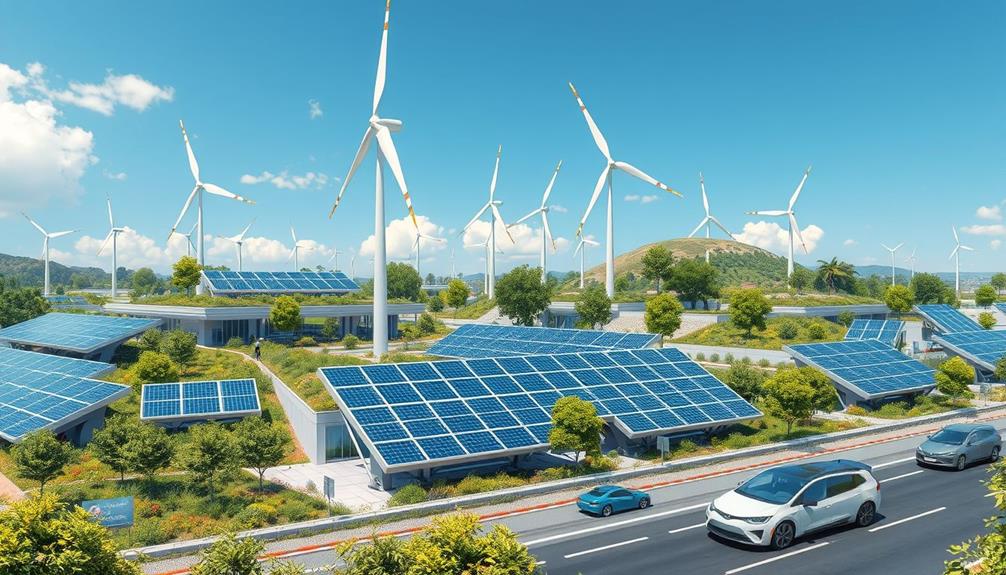
The energy landscape is rapidly evolving, driven by groundbreaking innovations in renewable technologies. As you immerse yourself in this new era, you'll notice significant advancements that not only make renewable energy more viable but also transform industries. One example of these advancements is the development of the windmill generator for residential energy. This technology allows homeowners to harness the power of the wind to generate their own electricity, reducing their dependence on traditional energy sources. Additionally, advancements in solar panel efficiency and battery storage technology have made it more practical for businesses and individuals to transition to renewable energy sources. These innovations are reshaping the energy landscape and driving a more sustainable future.
For instance, in 2022, solar energy prices plummeted to record lows, making it more cost-effective than natural gas for energy generation. Meanwhile, China has quadrupled its offshore wind capacity within just a year, showcasing the potential of wind energy.
Additionally, the shift towards sustainable practices is reflected in various sectors, emphasizing the need for nutritional balance in our consumption patterns, much like how renewable energy sources are balancing the global energy equation.
Here are some key innovations to keep an eye on:
- Lithium-iron phosphate (LFP) batteries: A promising alternative to traditional lithium-ion batteries, easing supply constraints for electric vehicles.
- Carbon capture and storage: Technologies that can capture up to 90% of CO2 emissions from industrial processes, helping meet emission reduction goals.
- Hydrogen-based steel manufacturing: A major step toward sustainable industrial practices, highlighting renewables' transformative potential.
- Solar energy advancements: Continuous improvements in solar technology are driving down costs and increasing efficiency.
These innovations are paving the way for a more sustainable future, making renewable energy an essential part of the global energy evolution.
Future Prospects for Energy Policy
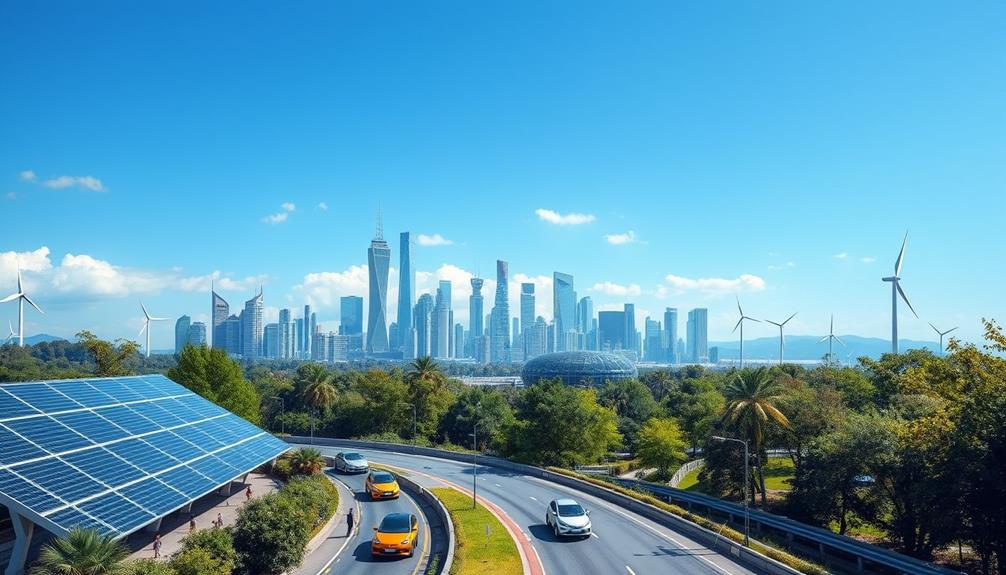
A robust energy policy is essential for steering the future of renewable energy. As you consider the rapid advancements in renewable technologies, like China's offshore wind capacity quadrupling in just a year, it's clear that swift progress isn't only possible but vital.
The Paris Agreement sets a global benchmark, pushing national policies toward carbon neutrality and sustainable energy practices by mid-century.
To achieve these goals, effective energy policies must prioritize substantial climate finance, particularly for developing nations working to reduce their reliance on fossil fuels. The economic viability of renewables has never been clearer—record-low solar energy prices in 2022 demonstrate that renewables can compete with traditional sources like natural gas.
However, policy alone isn't enough. Engaging the public and fostering a societal shift toward renewable energy adoption is essential. Recent surveys show a growing concern for climate change, especially among youth movements advocating for sustainable practices.
Frequently Asked Questions
What Is the Summary of Energy by Vaclav Smile?
In "Energy Myths and Realities," you'll find Smil analyzing alternative energy solutions. He emphasizes the complexities of shifting from fossil fuels and warns about the overselling of renewables, urging a realistic approach to energy policy.
What Are the Predictions for Renewable Energy?
Are you ready for a future powered by renewables? Predictions suggest that while growth is possible, significant challenges in technology, infrastructure, and material availability mean a swift shift away from fossil fuels isn't likely anytime soon.
Will Renewable Energy Be the Future?
You'll likely find renewable energy shaping the future considerably. With decreasing costs, technological advancements, and global commitments, it's becoming increasingly viable. Embracing these changes now will prepare you for a sustainable energy landscape ahead.
What Is the Projection for Renewable Energy in 2030?
You'll find that by 2030, renewable energy is expected to generate about 30% of global electricity. With solar capacity soaring and electric vehicles thriving, investments in this sector are set to exceed $2 trillion annually.
Conclusion
As you navigate the complexities of Vaclav Smil's insights, remember that shifting to a renewable future isn't as simple as flipping a switch. While innovations are promising, the lingering presence of fossil fuels still casts a long shadow. You've got to acknowledge the challenges ahead, but staying informed and engaged can help shape policies that prioritize sustainability. Just like a knight in shining armor, we need to be ready to battle for a cleaner, greener planet.
